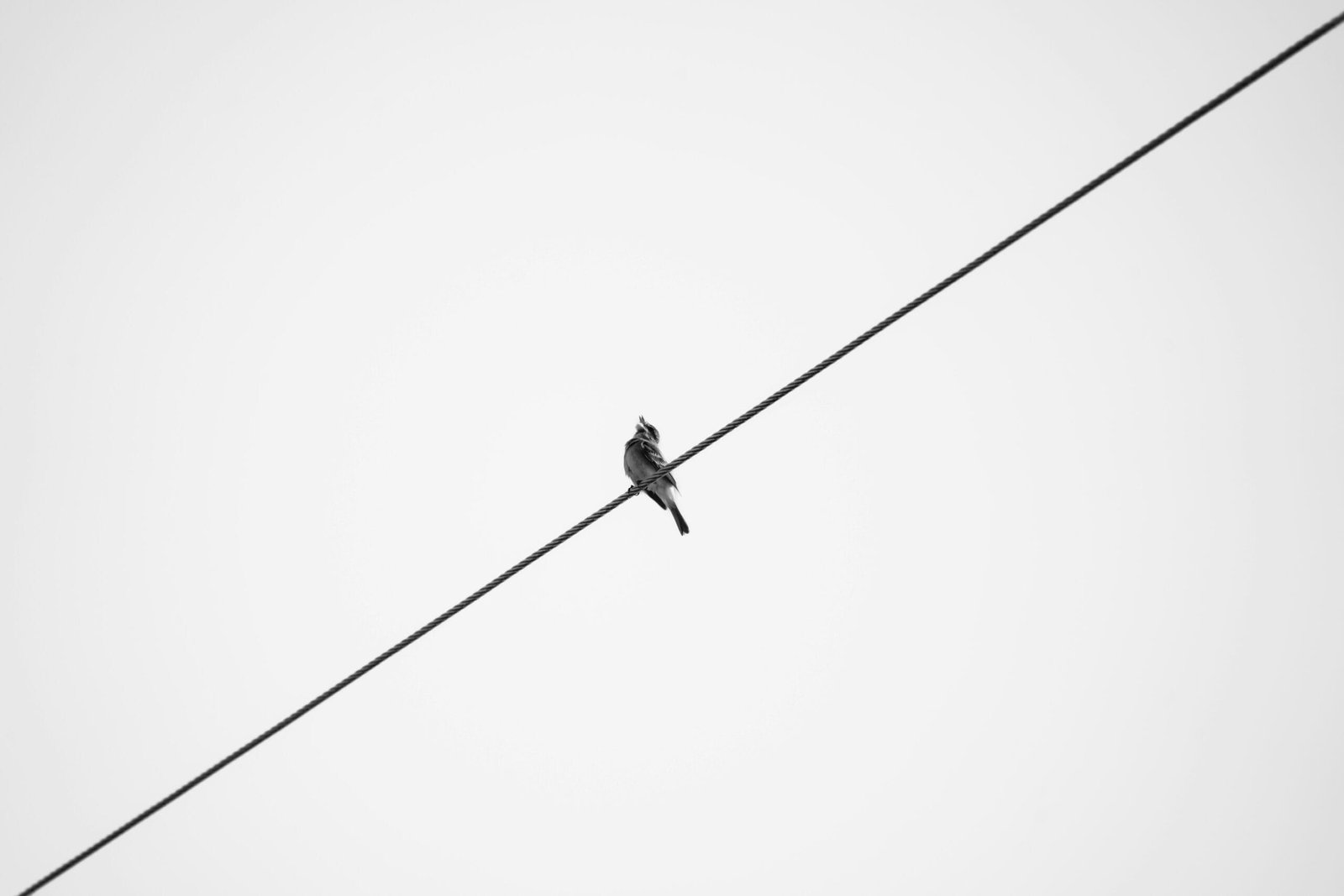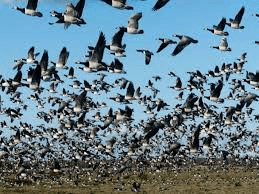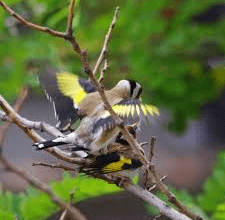Understanding the Behavior and Social Structure of Northern Cardinals

Introduction to Northern Cardinals
Northern Cardinals (Cardinalis cardinalis) are iconic songbirds native to North America, recognized for their vibrant plumage and distinct vocalizations. Male Northern Cardinals are particularly notable for their brilliant red coloration, while females present a more subdued palette of brown and warm red hues. This sexual dimorphism not only aids in identification but also plays a significant role in mating and territorial behaviors. These birds are medium-sized and characterized by their stout, orange-red bill, which is well-adapted for cracking seeds, one of their primary food sources.
Northern Cardinals inhabit a variety of environments, including woodlands, gardens, and shrubby areas. They thrive in denser vegetation, which offers essential cover from predators while providing ample foraging opportunities. Their preference for habitats that include both open and wooded areas contributes greatly to their widespread distribution across the eastern United States and parts of Mexico. This adaptability to various environments is one reason the Northern Cardinal is a common sight in both rural and urban gardens alike.
Understanding the behavior and social structure of Northern Cardinals is crucial for several reasons. These birds are not only vital indicators of ecosystem health but also play an important role in seed dispersal, contributing to the growth of various plant species. Moreover, their social interactions, which often include complex vocal communication and varied social hierarchies, can reveal insights into avian behavior more broadly. Observing these social structures and behaviors can deepen our appreciation for Northern Cardinals and highlight their ecological significance, paving the way for more informed conservation efforts.
Territorial Behavior During Mating Season
Northern Cardinals (Cardinalis cardinalis) exhibit pronounced territorial behavior during their mating season, a critical period for males as they seek to establish and defend their breeding grounds. This behavior is integral to ensuring mating success and is characterized by specific vocalizations and aggressive displays. Males utilize a wide repertoire of songs to communicate their presence and claim their territory. These vocalizations serve not only to advertise their location but also to deter rival males from encroaching on their designated areas.
The established territory typically encompasses the resources necessary for attracting a mate, including suitable nesting sites and abundant food sources. A male’s ability to maintain a territory significantly influences his attractiveness to potential female partners. Studies have shown that females tend to prefer males with larger territories, as these are often more abundant in resources. During this critical period, male Northern Cardinals will go to great lengths to defend their territories. This is often demonstrated through aggressive posturing, such as puffing up their feathers, spreading their wings, and performing rapid movements to signal their readiness to confront intruders.
In addition to physical displays, cardinals may engage in vocal duels with individual rivals, where each male attempts to outsing the other. This behavior not only reaffirms the established boundaries but also serves as a way to resolve conflicts without resorting to physical confrontations. Males who successfully defend their territories are more likely to attract mates and, subsequently, produce offspring. Thus, the territorial behavior of Northern Cardinals plays a crucial role in their reproductive success during the mating season, illustrating their adaptive strategies in securing a favorable environment for breeding.
The Role of Singing in Territory Defense
Singing is a vital aspect of the behavior of Northern Cardinals, particularly in relation to territory defense. Male Northern Cardinals are known for their melodious and diverse vocalizations, which serve multiple purposes. Primarily, these songs function as a means of asserting dominance over a particular area during the breeding season. By singing, males signal to potential rivals that a territory is occupied, thereby prompting them to think twice before entering.
Research indicates that these birds are highly adaptive in their vocal behavior. The complexity and frequency of their songs can vary significantly depending on the presence of competing males. For instance, when a rival encroaches on their domain, a male may respond with an intensified singing display. This not only reinforces his claim to the territory but also serves as a warning to the intruder. The songs can convey strength, urging rivals to retreat without escalation into physical confrontation.
Furthermore, the songs of Northern Cardinals are not solely reserved for territorial disputes with other males. They also play a role in communication with mates, helping to coordinate activities and affirm the bond between partners. The rich and varied tonal quality of these songs can enhance pair bonding, which is crucial for successful breeding and raising of young. In effect, the songs help establish a cohesive social structure within pairs while simultaneously marking the boundaries of their territory.
The importance of singing in Northern Cardinals extends beyond mere territorial claims. It acts as a complex communication tool, influencing interactions among males and between mates. By understanding the role of song in their behavior, enthusiasts and researchers can appreciate the intricate social dynamics at play in these vibrant birds. This knowledge adds depth to our understanding of avian behavior, particularly pertaining to the Northern Cardinal’s life.
Year-Round Monogamous Pair Bonds
Northern Cardinals (Cardinalis cardinalis) exhibit a fascinating mating system characterized by year-round monogamous pair bonds. This unique relationship is not only integral to their breeding success but also significantly influences their social structure. Unlike many bird species, which may engage in seasonal monogamy or polygyny, Northern Cardinals typically remain with a single mate for the duration of their lives.
These bonds are firmly established during the breeding season, when pairs engage in behaviors such as courtship feeding and mutual preening. Such activities foster a close connection between partners, enhancing their overall compatibility. This strong bond is essential, as Northern Cardinals rely on collaborative efforts to raise their young. The female is primarily responsible for nest building and incubation, while the male contributes by defending their territory and providing food for the female and chicks.
The long-lasting nature of these pair bonds also influences the social dynamics of Northern Cardinal populations. Typically, a male will defend a territory that is well-established, often returning to the same area year after year, which provides stability for the breeding pair. This loyalty not only maximizes the chances of reproductive success but also aids in the survival of their offspring. When paired, both the male and female exhibit consistent vocalization patterns, using their distinctive songs to communicate with one another and establish their presence within a given territory.
Moreover, the strong monogamous relationships fostered by Northern Cardinals contribute to a stable social structure. When pairs are able to concentrate on raising their young together, the likelihood of fledglings surviving to adulthood increases. This stability ultimately enhances the resilience of their population, making the Northern Cardinal an excellent example of the advantages offered by monogamous pair bonding in the avian world.
Joint Nesting and Feeding Behaviors
Northern Cardinals are known for their striking appearance and melodious songs, but their social structure also plays a critical role in their survival and reproductive success. A key aspect of their behavior is the cooperative efforts of mated pairs in nesting and caring for their young. Typically, a male and female Northern Cardinal will work collaboratively to construct their nests, which are often built in dense shrubs or trees. The male cardinal is responsible for gathering materials such as twigs, grass, and leaves, while the female utilizes these resources to construct a well-hidden and insulated nest. This joint effort not only strengthens their pair bond but also allows for more efficient use of time and energy during the nesting period.
Once the female lays eggs and they begin to hatch, both parents take on significant responsibilities in feeding and protecting their fledglings. The male cardinal often acts as the primary forager, searching for seeds, fruits, and insects to bring back to the nest. Meanwhile, the female remains close to the young, ensuring they are safe and sound. This division of labor is a prime example of how strong social ties influence the parenting roles within Northern Cardinal pairs. Moreover, during the feeding process, the parents display interesting behaviors such as singing together or performing short aerial displays, reinforcing social bonds and territorial claims.
Feeding habits among Northern Cardinals are also shaped by their social dynamics. In areas where cardinal populations are denser, food resources can become competitive. However, even in such scenarios, pairs exhibit a cooperative feeding behavior that helps to maintain their relationship. By gathering food together, these birds not only enhance their own efficiency but also support the survival of their offspring, showcasing the significance of social structures in their reproductive success. In conclusion, the cooperative nesting and feeding behaviors of Northern Cardinals highlight the intricate social dynamics that are essential for their thriving in natural habitats.
Communication Beyond Song
Northern Cardinals are well-known for their melodious songs, which serve a significant role in their social interactions and mating rituals. However, their communication extends far beyond these vocalizations. Both male and female Northern Cardinals possess a diverse array of calls and body language that are essential for conveying messages within their social structure. This multifaceted communication allows them to alert one another to various situations, particularly threats such as potential predators.
One of the primary forms of vocal communication in Northern Cardinals consists of sharp, short calls. These calls are often used to signal distress or warning, allowing cardinals to quickly alert fellow birds to the presence of danger. For instance, if a cardinal spots a hawk or another predatory bird, it may emit a series of rapid notes that convey urgency. This alerting behavior is crucial for the survival of these birds, as it enables them to coordinate their responses to potential threats effectively.
Furthermore, body language plays a vital role in the non-verbal communication of Northern Cardinals. They utilize various postures, such as puffing up their feathers or displaying their wings, to convey aggression or establish dominance during territorial disputes. The positioning of their bodies can also indicate their mood; for example, a cardinal that is perched upright with its feathers sleek may be displaying confidence and calmness. Conversely, a cardinal that crouches low and fluffs its feathers may be expressing submission or vulnerability.
In addition to vocalizations and body language, facial expressions also contribute to the communication strategies of Northern Cardinals. The physical features, such as the crest or beak position, can signal different emotional states or intents to other cardinals. Collectively, these communicative methods are essential in fostering social relationships within their groups and ensuring their survival in the wild.
Unique Traits of Northern Cardinal Songs
The Northern Cardinal (Cardinalis cardinalis) is renowned for its captivating songs, which are characterized by a series of distinctive qualities that set them apart from other songbird species. One of the most notable traits of these songs is their rich, melodious quality. Male cardinals are particularly vocal, utilizing their songs to establish territory, attract mates, and communicate with other cardinals in the vicinity. Their songs are complex, comprising a variety of phrases and variations that can be heard from a distance, with each note characterized by clarity and purpose.
One unique aspect of cardinal songs is their variability. Male Northern Cardinals can produce multiple distinct song variations, often referred to as “song types.” Research has suggested that each male has its unique repertoire, which can include different phrase structures, pitches, and rhythms. This variability not only allows for a rich auditory tapestry in their habitat but also plays a crucial role in personal identification among cardinals. The diversity of songs can assist in maintaining social dynamics, as individuals learn to recognize particular songs associated with different cardinals.
Moreover, the timing of the songs contributes to their uniqueness. Northern Cardinals often sing in the early morning and late evening, taking advantage of the quieter times of day to project their songs across larger areas. Their songs vary seasonally, with heightened activity during the breeding season as males utilize their vocal prowess to court potential mates. Unlike many other songbird species that may have specific song patterns, Northern Cardinals exhibit a level of spontaneity and adaptation in their singing that adds to their complexity and showcases their social structure.
Integrating these distinctive traits into their communication repertoire not only enhances their interactions but also reinforces their identity in the avian community. This adaptability in song production illustrates the richness of their social structure and highlights why Northern Cardinals are celebrated for their melodious contributions to the natural soundscape.
The Importance of Territory and Pair Bonds in Survival
The survival and reproductive success of Northern Cardinals (Cardinalis cardinalis) are intricately linked to their territoriality and the establishment of strong pair bonds. Research indicates that these birds are highly territorial, particularly during the breeding season, when males actively defend their chosen area against intruders. The maintenance of a well-defined territory serves multiple purposes, including access to essential resources such as food and nesting sites, and it provides a safe environment for raising offspring. This territorial defense is not only vital for individual survival but also contributes to the overall success of the species. By securing a territory, a male cardinal increases his chances of attracting a mate, which is a critical factor in breeding success.
Pair bonds in Northern Cardinals are another essential aspect of their social structure. These birds typically form monogamous pairs that work together in various aspects of their lives, from foraging for food to raising their young. The strength and stability of these pair bonds enhance the overall resilience of the cardinal population. During the breeding season, the male’s active defense of the territory is complemented by the female’s role in nest building and caring for the young. Both partners are engaged, which not only improves the chances of nest success but also fosters a cooperative dynamic that benefits their offspring’s survival chances.
Furthermore, the presence of strong pair bonds may also serve as a measure of attraction in the eastern regions of North America where they primarily reside. Research indicates that cardinals with long-lasting partnerships tend to have higher reproductive success as they can optimize their time and resources. This synergy facilitates the nurturing of a stable environment that promotes growth and development, further enhancing survival rates among nestlings. Ultimately, the strong pair bonds and territorial behaviors evident in Northern Cardinals play a crucial role in their ecological niche, ensuring both the continuity of their lineage and the stability of their population in diverse habitats.
Conclusion: The Fascinating World of Northern Cardinals
Throughout this exploration of Northern Cardinals, we have uncovered a wealth of information regarding their unique behaviors and intricate social structures. These birds, known for their vibrant plumage and distinctive songs, are more than just a visual delight; they play a vital role in their ecosystems and exhibit a variety of complex interactions. From their pair bonding rituals to their formidable territorial displays, Northern Cardinals demonstrate a range of behaviors that are both fascinating and essential for their survival.
One notable aspect of their social structure is the strong pair bonds that develop during mating season. Northern Cardinals typically mate for life, engaging in cooperative behaviors such as feeding and caring for their young. This partnership not only strengthens their reproductive success but also promotes a stable environment for their offspring to thrive. Additionally, these birds often engage in social rituals outside of mating, such as mutual preening, which reinforces their bond and establishes cohesion within their small groups.
Moreover, Northern Cardinals have a varied diet that influences their social interactions. They are known to forage both solitarily and in groups, which can lead to competitive scenarios particularly when food sources are scarce. Observing how these birds navigate their environment and interact with one another can provide invaluable insights into their adaptive behaviors and resource management strategies.
As we conclude this discussion on Northern Cardinals, it is evident that these birds embody a remarkable combination of beauty and behavioral complexity. We encourage readers to take the time to observe these captivating creatures within their natural habitat. Whether through backyard birdwatching or visits to local parks, appreciating the Northern Cardinal can bring immense joy and a deeper understanding of the intricate lives that exist around us.


